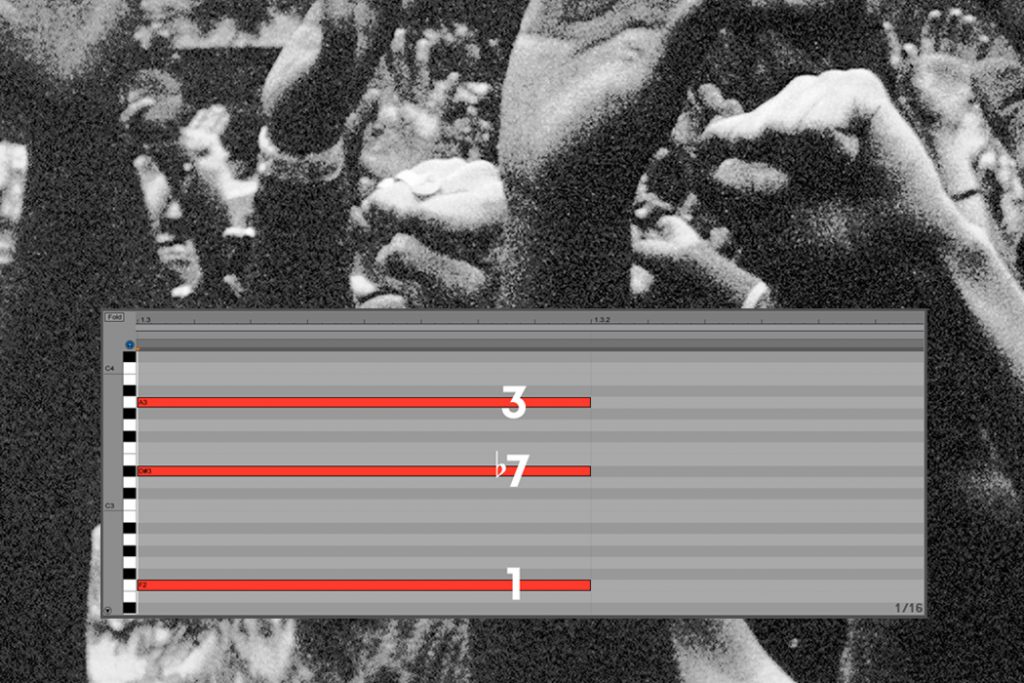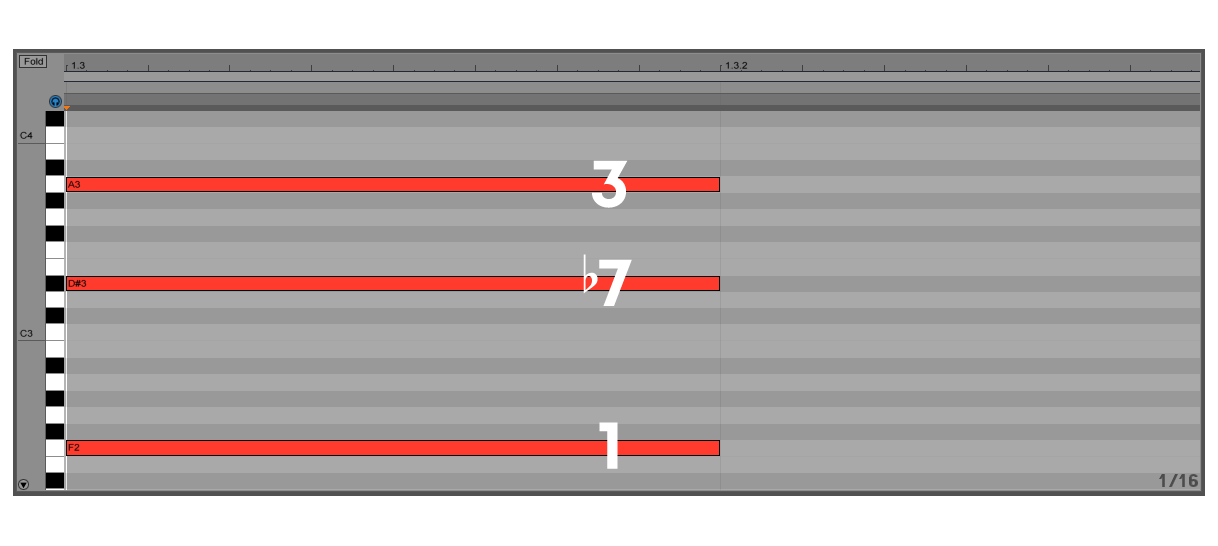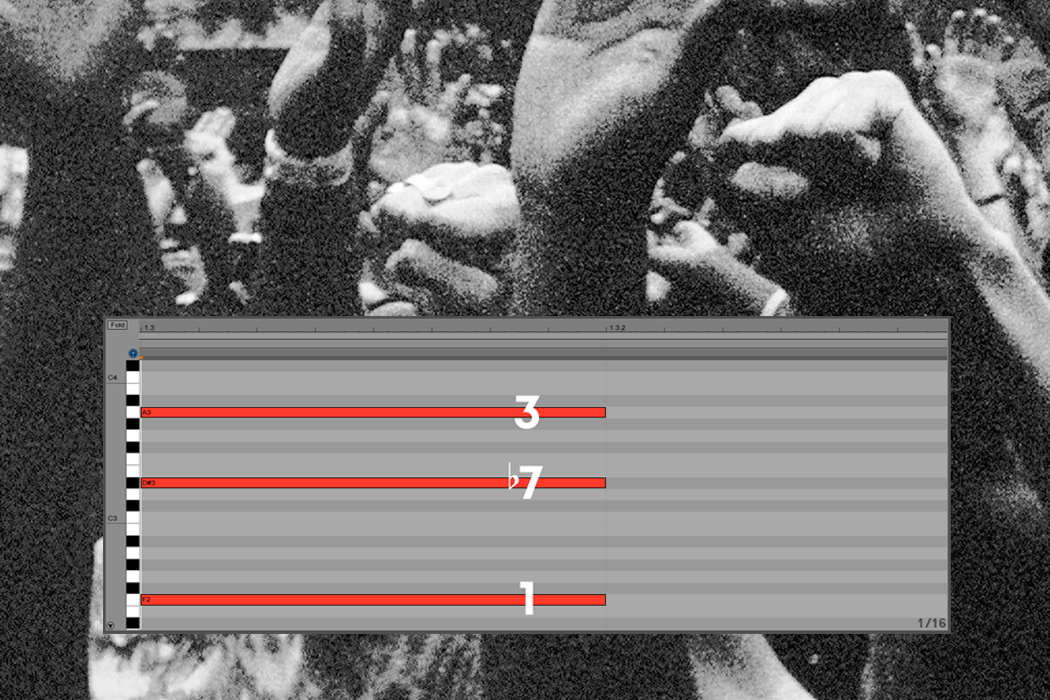
+ Take your modern jazz piano and hip-hop beat making to new heights with Soundfly’s new course, Elijah Fox: Impressionist Piano & Production!
In terms of their construction, dominant sevenths are nearly the same as major sevenths. They’re composed of a major triad (root, major third, and perfect fifth) with a minor seventh.
The minor seventh sits two semitone steps below, or ten semitone steps above, the root.
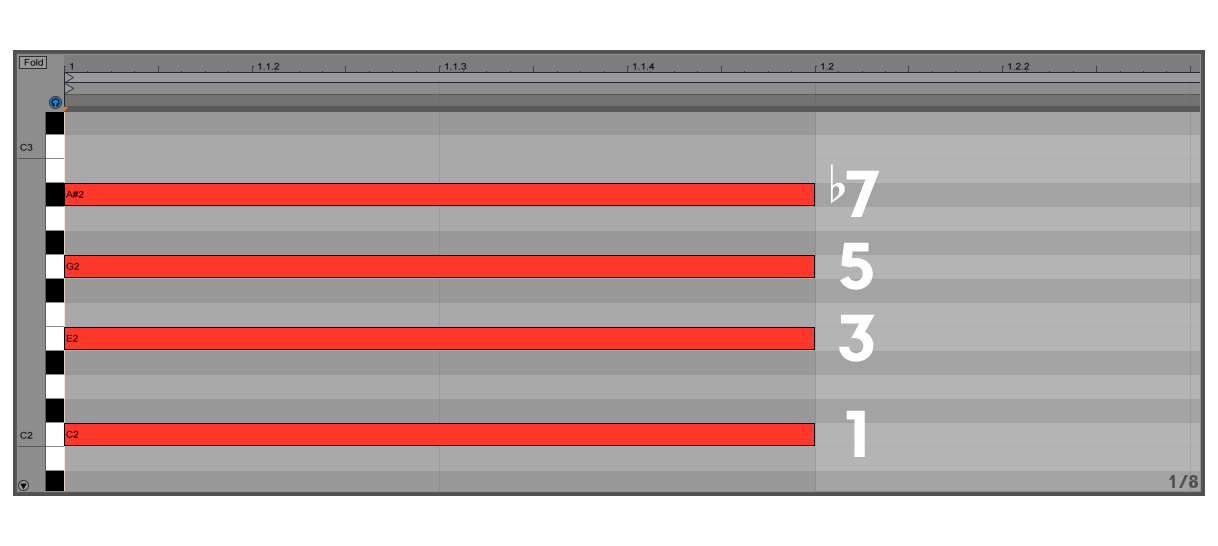
Download: C Dominant Seventh Chord MIDI
For a refresher on how seventh chords work in general, you can head to this Flypaper post. Moving right along though, let’s check a tune made out of dominant sevenths.
These chords are made up of a major triad, with a minor seventh on top. In our major scale, dominant seventh chords naturally occur when we stack thirds on our V chord. If the V chord wasn’t already effective enough at generating a sense of tension, adding that minor seventh on top really makes things tense.
In “Sugah Daddy” by D’Angelo and The Vanguard, the fast, funky swing of the single claps swirling about that fat backbeat give the whole track a strut from the start. But then those punchy, confident piano chords really walk the whole thing home.
The main riff of the song is comprised of three chords, descending chromatically, then hopping back and forth by a semitone step.
(Note that, for one reason or another, the key of this recording is about a quarter-tone off of standard tuning. We’ll analyze it as if it’s in F.)
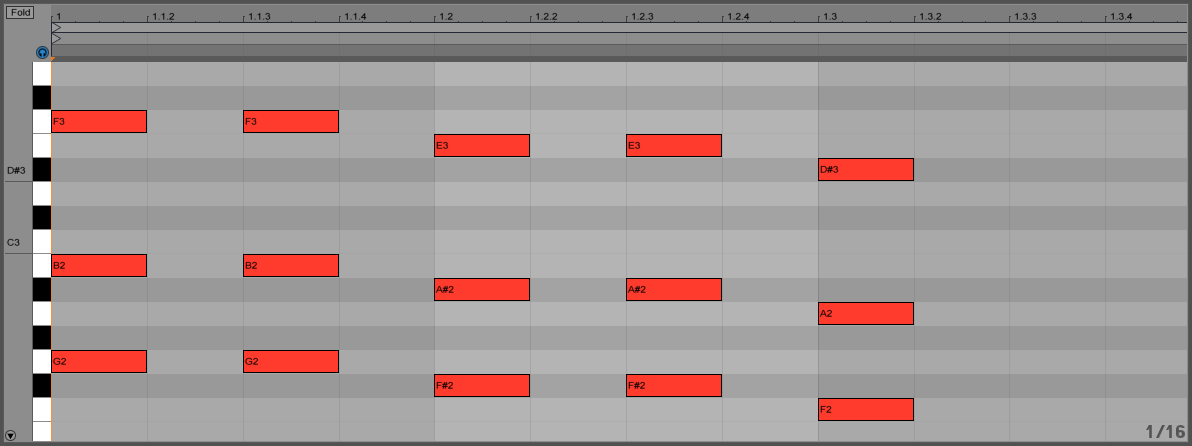
This spread voicing leaves only the essence of the dominant seventh sound — the root, the seventh above it, and the third of the chord sitting a tritone above the seventh. It’s a very stark sound, and a common one in the world of funk.
Furthermore, the only reason way to really analyze something like this tends to be related to the amount of time we spend on a particular chord.
The II7 and ♭II7 are leading us to a groove that lives mostly around that I7, or F7, sound.
Oh and one more thing about 7ths…
We recently launched a video on our YouTube channel about the mysterious origins of the triangular symbol that has come to represent the major seventh on jazz charts. Theorists and curiosity-junkies, come one come all, and subscribe if you like that sorta thing!
Inner Workings
The density and voracity of the dominant seventh chord comes from the hidden triad within — the diminished triad! This is the ultra-agitated sound of an unresolved leading tone, just begging to fall back into the perfect harmony of the highly consonant I chord.
Take a look at this example in the key of C:
While the dominant seventh chord is perhaps best known for its original functionality, the V7 chord leading back to I, it’s also extremely common these days to see it used as a tonal center in blues, more modal songs, or funk tunes, where it’s all about sitting on that discomfort and letting it (literally) move you!

And if you’re interested to learn more about how to harness the intersections between jazz, improvisation, and modern music like hip-hop in your own music, you’re going to love Soundfly’s course with jazz pianist and beat producer, Kiefer: Keys, Chords, & Beats.
